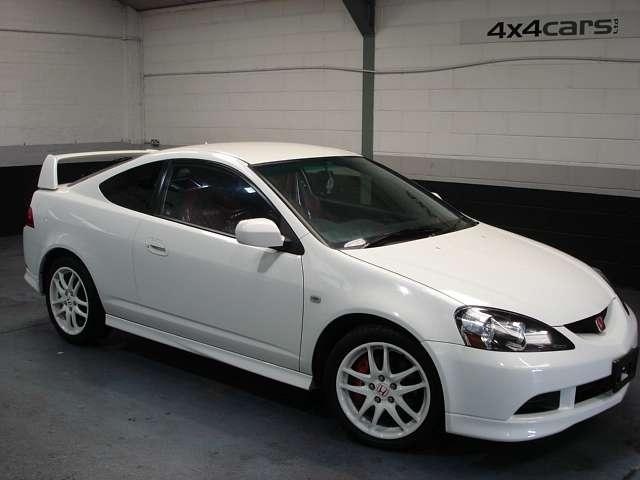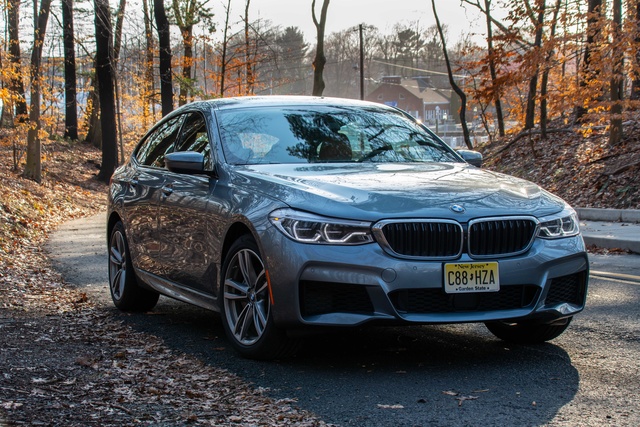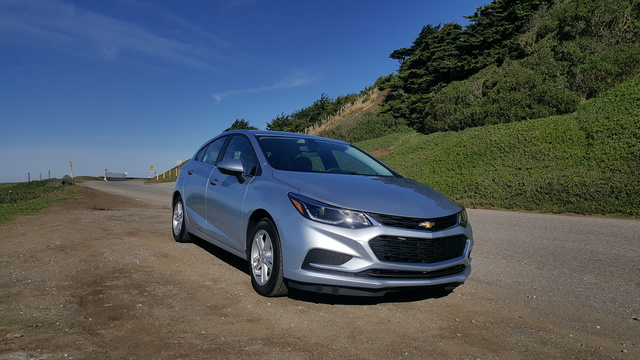Few cars have as much heritage as the Dodge Charger, and fewer still have had so many incarnations. The original 1966 Charger was a high-end sporty fastback aimed at cars like the Buick Riviera, but it proved unpopular in that form and was soon reworked into the iconic coke-bottle-shaped 1968 version that made the name famous. It’s that one that featured in The Dukes of Hazzard and, much later, The Fast and the Furious, and it’s cast a long shadow ever since.
Of course, that wasn’t the end. In 1971, Dodge changed again into an even more dramatic version of its muscle car self, and it could still be ordered as a Super Bee or with the famous 426 Hemi V8 back then. As the muscle car era faded, it sprouted vinyl tops and hood ornaments before morphing into a baroque, disco-era Chrysler Cordoba clone in 1975, though you could still get one with “Charger Daytona” stripes and a 360 V8, finally expiring in 1978 in favour of the sportier first-generation Magnum.
The Charger returned in the 1980s as a small, front-wheel-drive coupe with turbo power. There was even a Shelby version of this Charger, but this tiny car was soon overshadowed by the more substantial Dodge Daytona. The name went into mothballs again until 1999. That year, Dodge issued a sleek new Charger concept, a low-slung sedan this time, to great public interest. This was shortly after struggling Chrysler had merged with Daimler-Benz, resulting in the DaimlerChrysler company.
That partnership would prove to be short-lived, but it helped turn that Charger concept into a real car for 2006. Offered as a five-passenger, four-door sedan with coupe-like styling meant to pay homage to the 1968 and 1971 versions, the 2006 Dodge Charger was the brand’s first rear-wheel-drive sedan in 17 years. Like the closely related Chrysler 300, it borrowed a variety of German engineering ideas from the Daimler-Benz side of the company, but it isn’t directly based on any one Mercedes-Benz model.
Like Mercedes’s big sedans, the limits of rear-wheel drive for some drivers meant all-wheel drive (AWD) versions were planned from the start. Power came only from V6 and V8 engines, including a new 5.7-litre “Hemi,” and it wasn’t long before Dodge began reviving even more old memories by adding things like Super Bee and Daytona packages.
The model got a major refresh for 2011 with updated styling and technology, and this is sometimes considered the car’s second generation. It got even wilder, eventually being fitted with the supercharged Hellcat V8, with the most powerful iterations packing 807 horsepower. It continued running largely unchanged for a long time, and production out of Stellantis’s Brampton, Ontario assembly plant only ended in late 2023. A new Charger will be arriving in late 2024, and it’ll be available as either an electric or a gas model, powered by Stellantis’s “Hurricane” inline sixes.
The modern Charger is both a wildly fast muscle car and a capable family sedan and pretty durable too, as you’d expect from a car sometimes used for police work. Later post-2011 designs are more reliable than the earlier 2006 to 2010 versions, which is also true for the Chrysler 300. The Charger’s muscular image and many lurid performance packages also encourage hard driving, so it’s important to inspect older models and high-performance versions before purchase. Here, we’ve outlined the two long-running generations of modern Dodge Chargers and the upcoming third future model, which are the ones most consumers are shopping for, and included some information about pricing and reliability. We’ve counted them by their generation, including the classic models.
CarGurus has tested various versions of Charger several times and recognized them with these commendable overall scores: 7.7 (2013); 8.3 (2014); 7.8 (2015); 8.2 (2016); 7.3 (2017); 7.3 (2018); and 8.0 (2022).
Dodge Charger Buying Guide: Cost, Reliability, and the Best Years to Buy
- Frequently Asked Questions
- Dodge Charger Pros and Cons
- Dodge Charger Generations
- Eighth Generation (2025 - Present)
- Seventh Generation (2011-2024)
- Sixth Generation (2006-2010)
Frequently Asked Questions
Which Dodge Charger years are the best?
The best years fall into the seventh-generation “LD” design. It was new in 2011, but early on there were a few bugs. Models built from 2013 to 2023, however, saw a steady increase in quality and reliability. Just about any charger built after 2017 is going to be fairly reliable, and that even includes the Hellcat models which, for all their power, don’t seem to be much less durable than the standard V6 SXT models.
What are the worst Dodge Charger years?
The early ones. Among the modern Dodge Chargers, 2006 through 2008 models generate the highest number of complaints and have the worst repair records. The design was completely new in 2006, and beyond the usual teething troubles of a new model, these cars also came with a new engine family (the 5.7-litre Hemi) and used lots of sophisticated systems derived from complex Mercedes-Benz tech. It took a while to perfect them, and they’re also the oldest and most worn examples. Beyond mechanical issues, these early Chargers are more rust-prone than later models.
Is a used Dodge Charger a good deal?
Yes. The modern Charger has a lot to offer. It’s comfortable and roomy for a family of five, has a big trunk, looks cool, and has lots of performance and different configuration and personalization choices. It’s also not all that expensive for what it is. Towards the end of its life, there weren’t very many direct competitors because no other four-door car from mainstream brands could match its performance, and few others were as large. It’s still important to make sure you’re not buying an abused one, and they do have flaws, but yes, they're a lot of car for the money.
Dodge Charger Pros and Cons
Pros:
- Muscle-car style
- Insanely powerful engines
- Available AWD
- Expansive interior and trunk space
Cons:
- Big appetite for fuel
- Most versions lack the latest safety tech
- Feels old and date now
Dodge Charger Generations
Eighth Generation (2025-Present)
Though it has not arrived at dealers at the time of this writing, Dodge plans to roll out a new set of Chargers in late 2024. There will be two- and four-door versions this time and also gas-powered and fully electric models.
The first to arrive will be the gas-powered coupes, which will use the standard and high-output versions of Stellantis’s new “Hurricane” 3.0-litre turbocharged inline six. These two versions of the Hurricane have 420 and 550 horsepower, respectively, so they should be very quick. The styling clearly echoes the 1968 to 1970 model, inside and out. There’s even a “pistol grip” shifter in the cabin like the ones from the 1960s.
After the gas models debut, the fully electric Charger Daytona will come online, as previewed by the Charger Daytona SRT Concept in 2023. The Daytona will come only as a sedan, but there will be multiple versions. The Daytona will use a 93.9-kWh battery pack and is expected to provide ranges of 418 kilometres in the 607-horsepower Scat Pack or 510 kilometres in the 496-horsepower R/T. Both will be dual-motor all-wheel drive machines.
A more powerful Charger Daytona Banshee is also in the works but will not arrive until at least 2026. According to Dodge, this sedan’s 183-kW maximum charging rate should allow it to juice to 80% in just over 30 minutes. Both versions will share interiors and a great deal of technology, including a standard 12.3-inch central infotainment screen and 10.3- or 16.0-inch-wide digital gauge clusters.
Seventh Generation (2011-2024)
After six years on the market, Dodge gave the reinvented Charger a major refresh, but not quite a total redesign, for 2011. What had been the “LX” Series became the “LD,” with sleeker styling, an improved interior, and major electrical system and engine upgrades. Underneath, many of the core pieces of the design remained, even the Mercedes-Benz-derived suspension pieces. DaimlerChrysler was history by this time, as Fiat was about to take over, but nobody could have foreseen that the LD Charger would last for 12 more years.
Because the “LD” Charger received many revisions and additions before finally being discontinued at the end of 2023, we’ve broken this long-running series into two basic eras: 2011 to 2014, and 2015 to 2023.
For 2011, the Charger was comprehensively updated with revised suspension tuning, more responsive steering, and even more aggressive looks thanks to scowling headlights and an LED taillight panel that spanned the width of the car. The interior materials were upgraded and much of the cabin was redesigned, including its infotainment screen. The standard display was still a tiny 4.3-inch unit, but the optional one was now 8.4 inches (up from 6.5) and ran an early version of UConnect, Dodge’s well-known and intuitive infotainment software.
For the base engine, Dodge’s engineers installed the all-new 3.6-litre “Pentastar” V6 in place of the former 2.7-litre unit. It made 292 horsepower and 260 pound-feet of torque, transmitted through a five-speed automatic transmission. That powertrain earned a Natural Resources Canada highway rating as low as 7.6 L/100 km. Less efficient was the 370-horsepower 5.7-litre Hemi V8 that powered the R/T. It was offered in both rear-drive and AWD configurations but couldn’t manage better than 12.6 L/100 km combined in either.
Other enhancements for the new generation included safety features such as blind-spot monitoring, forward-collision warning, and even available adaptive cruise control.
For 2012, the Dodge Charger was updated with a new SXT trim level slotted in between the SE and R/T and an available eight-speed automatic transmission that dropped highway fuel economy to 6.4 L/100 km. That year also saw the return of the Charger SRT8 model, now sporting a 470-horsepower 6.4-litre Hemi V8, a throaty active exhaust system, adaptive damping suspension, and a 900-watt sound system.
In 2015, the Charger got a comprehensive update. Once again, the chassis was retuned and fitted with more lightweight components, and the efficient eight-speed automatic transmission became standard across the board. The interior got updated materials and the standard display became a 7.0-inch TFT unit, while the 8.4-inch screen got updated software.
The AWD option was limited to SE and SXT models. Engines were carried over for the Charger SE, SXT, and R/T variants, but new R/T Scat Pack and SRT 392 versions of the Charger featured the 6.4-litre Hemi that was now good for 485 horsepower. At the top of the lineup was the 2015 Charger SRT Hellcat, noteworthy for its then-new supercharged 6.2-litre Hemi V8 and whopping 707 horsepower. With the Charger’s special launch and traction control system, drivers can lock the car in place and perform massive burnouts, and the eight-speed transmission is surprisingly responsive to the paddle shifters.
After 2015, changes were gradual. In 2017, Apple CarPlay and Android Auto were integrated with the UConnect infotainment system, and a pair of Daytona trim levels joined the lineup. The Charger SE was discontinued in 2018, leaving the SXT as the entry-level model. Positioned above the SXT was a new AWD Dodge Charger GT powered by the 3.6-litre V6. Dodge made more revisions to the Charger trim levels in 2019.
Entering its ninth year, the 2020 model of the car arrived with new SRT Hellcat Wide Body and Dodge Charger Scat Pack Wide Body versions. These 2020 Chargers featured fender flares and wide tires that increased overall width by nearly 9 centimetres. The 2022 model year brought a new variant called Jailbreak, building on the Dodge Charger SRT Hellcat Redeye. The car’s supercharged Hemi V8 got another ten ponies for 807 horsepower. 2023 saw several “last call” special edition wide-body models, including the Super Bee, King Daytona, and Scat Pack Swinger. Production ended on December 22, 2023.
Despite its high-performance capability and image, the LD Charger is an easy car to live with, docile around town, and just as family-friendly in Hellcat form as it is in the base SXT trim. It’s comfy and durable, even if it doesn’t have the latest and greatest features by the standards of 2023. The interior is a little on the basic side but functional and comfy. It’s reliable, too, although the 2011 and 2012 models tend to have more than their fair share of problems, most of which are electrical system and infotainment problems, not broken mechanical pieces.
As with the earlier LX cars, high-performance LD models are much more expensive than the regular V6 and even V8 chargers. Later models will have more safety and infotainment features a nd are usually in better shape, so buy as new as your budget will allow. Early LD V6s in good shape, with under 150,000 kilometres, sell for roughly $10,000 to $17,000, while 5.7-litre V8s go for slightly more, but SRT8s of this era can range well past $20,000. 2015 and newer V6s start at around $17,000, but late-model 2022 and 2023 cars are still much more expensive than that. This is also true of 5.7-litre V8 versions, which, aside from the odd police special, will cost a minimum of $25,000 and go upward from there. Hellcat models typically start around $55,000, and wide-body cars can’t be had for less than $70,000 in good condition, at least not yet.
Sixth Generation (2006-2010)
Drawing on the visuals set forth by the 1999 Dodge Charger concept car, the “LX” Series Charger debuted at the 2005 Detroit auto show and hit showrooms only four months later. It was the first production Charger with four doors, but that greatly increased its sales potential, as it could double as a full-size family sedan, a function it performed pretty well throughout its life. The revived Charger rode the same “LX” platform as the revived Chrysler 300 and would, in time, be joined by two other revived names, the long-lived Challenger coupe and the not-so-popular Magnum station wagon.
The platform used many Mercedes-Benz components, even if the Charger wasn't directly based on any single Mercedes design. Its front and rear suspensions were borrowed from the E-Class and the S-Class, and the original five-speed automatic transmission, the electrical system, rear differential and optional all-wheel-drive system were also derived from the German parts bin. It was all robust, if complex, componentry, but it all worked very well.
Under the hood, the power was pure Mopar, and at first there were four trims: SE, SXT, R/T, or SRT8 guise. Dodge Charger SE and SXT models featured a 250-horsepower 3.5-litre V6, whereas the R/T was equipped with a 340-horsepower 5.7-litre Hemi V8 and the Charger SRT8 used a 425-horsepower 6.1-litre Hemi V8. In the mid-2000s, the SRT8 was a seriously fast machine, and the Charger was much more modern than its only direct competitors, the Ford Crown Victoria and Mercury Grand Marquis. It was also bigger and much more fun to drive than wallflowers like the Toyota Avalon or Hyundai Azera.
Based on Natural Resources Canada estimates, drivers of the SE could expect to burn as little as 9.6 litres per 100 kilometres on the highway. All 2006 Dodge Chargers performed well in government crash tests and were well-equipped, though buyers could opt for desirable options such as a rear DVD entertainment system or UConnect touch-screen infotainment system.
Just one year after its introduction, the full-size sedan’s lineup was expanded with the addition of AWD Dodge Charger SXT and R/T variants, as well as a new 190-horsepower 2.7-litre Pentastar V6 engine that was optional on the base SE. The 2008 Charger followed with only minor changes, but more noteworthy updates were in store. For 2009, Dodge’s large sedan received restyled taillights and interior trim, standard aluminum wheels on all models, efficient cylinder deactivation technology and more power specs for the 5.7-litre V8, and several extra features for the Charger SRT8. Standard side-curtain airbags were added in 2010.
Many special editions were offered in these LX years, often in wild colours that evoked the Chargers of the early 1970s. Super Bees, Daytonas, and others offered lots of speed and wild looks, and there was also a DUB edition with audio upgrades and 20-inch wheels. These days, 20-inch rims are common, but in 2008, they were still primarily an aftermarket phenomenon.
When these Chargers were new, they were hugely popular and exciting, but the early models eventually proved to be a little undercooked. Over the years, they’ve generated many complaints about eating up valve seals and head gaskets, transmission issues, and electrical gremlins in the complex wiring system. They are more affordable than the later “LD” Series models but not as reliable. They also seem rust prone, particularly in Canada where snow is an annual concern. Dodge had resolved most of the issues by 2009, so if you’re interested in one of these, it’s best to seek out later years.
As always, the cleanest, lowest-kilometre examples have the best chance of being reliable drivers. If you shop around, you can find LX-series V6s with under 150,000 kilometres on the dial and in good shape for $8,000 to $12,000, which is a genuinely good deal. V8 models in similar condition will cost about 10-20% more, but SRT-8 models are an entirely different story. These early SRT hot rods are already appreciating as potential collector’s items, and they’ll cost you a minimum of $25,000 in good shape.
The first-gen Charger isn’t a bad buy, but given the number of later cars on the market and their visual and dynamic similarity, it’s best to search broadly.





